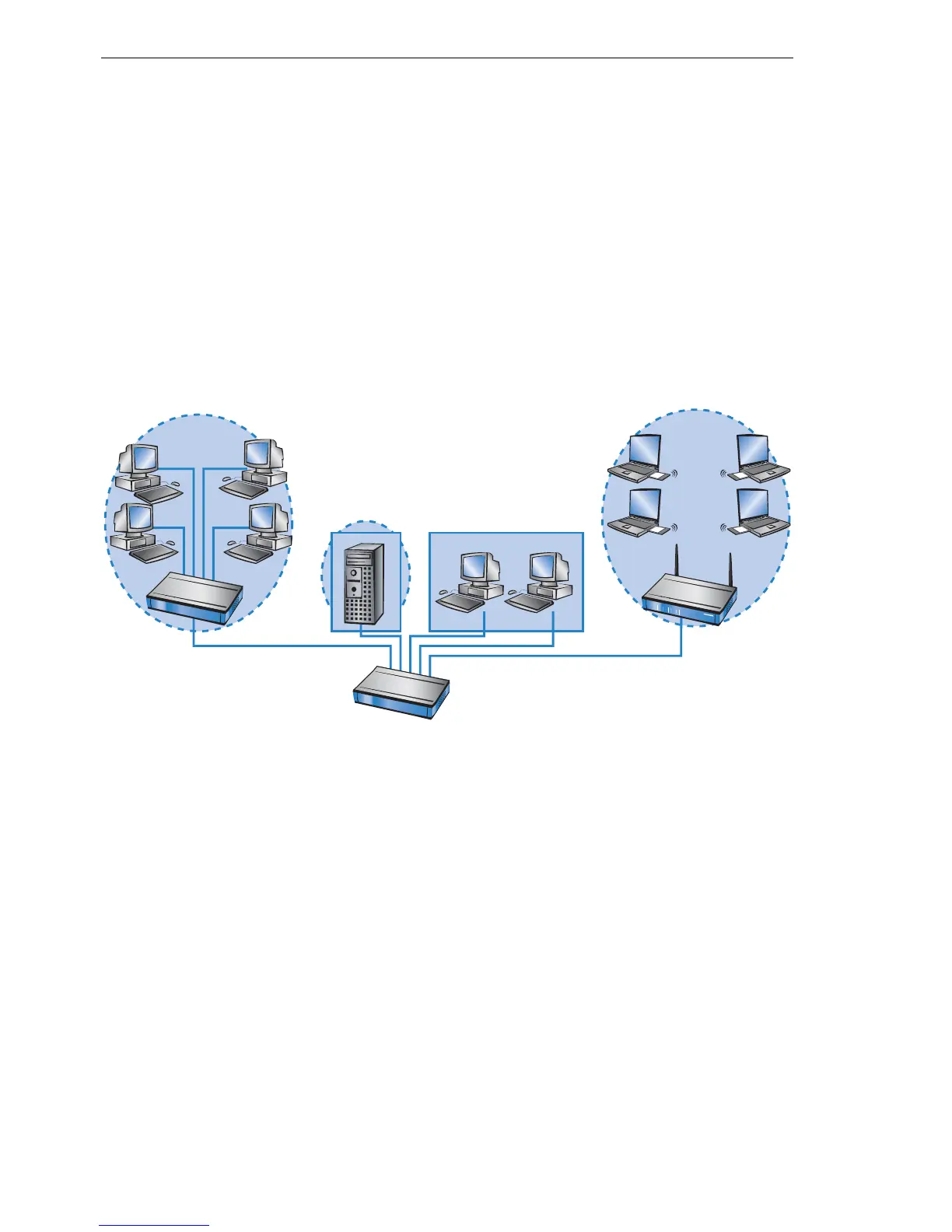Virtual LANs (VLANs)
336
10.2
This is how a VLAN works
BAT54-Rail/F..
Release
7.54
06/08
D Data traffic of certain logical units should be transmitted with a specific pri-
ority compared to other network users.
An example to clarify: A switch is connected to a hub within a LAN, which
connects four stations from the marketing department to the network. One
server and two stations of the accounting department are directly connected
to the switch. The last section is the base station of a wireless network, where
four WLAN clients reside from the sales department.
The stations from marketing and sales should be able to communicate with
each other. Additionally, they should be able to access the server. The ac-
counting department needs also access to the server, but should otherwise
be shielded against the other stations.
10.2.1 Frame tagging
In order to shield or, if necessary, to priorities data traffic of a virtual LAN
against the other network users, data packets must have an additional fea-
ture (a “tag”). That’s why the respective process is also called “frame tag-
ging”.
Frame tagging must be realized such that the following requirements are ful-
filled:
D Data packets with and without frame tagging must be able to exist in par-
allel on a physical LAN.
D Stations and switches in a LAN, which do not support VLAN technology,
must ignore the data packets with frame tagging and/or treat them as
“normal” data packets.
The tagging is realized by an additional field within the MAC frame. This field
contains two important information for the virtual LAN:
Hub
Switch
WLAN
base station
Server Accounting stations
WLAN
sales
LAN segment
marketing

